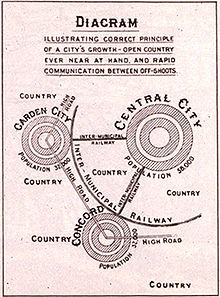A New Theory Of Urban Design Christopher Alexander Pdf

• 5.6k Downloads • Abstract A Pattern Language by Christopher Alexander is renowned for providing simple, conveniently formatted, humanist solutions to complex design problems ranging in scale from urban planning through to interior design. This text is also believed to be the most widely read architectural treatise ever published. Despite this, there is also little acknowledgement in its popular reception that it is only one part of a trilogy of works documenting Alexander’s ‘second theory’ of architecture. Thus, while A Pattern Language is widely referenced in architectural scholarship, most of these references simply acknowledge its existence and fail to engage with its content. Download mi casa heavenly sent charles webster remix zippy.
Furthermore, the literature that does critically engage with Alexander’s theory, challenging its ideas and assumptions, is often difficult to find, and the criticisms are diverse and complex. The intent of this paper is to facilitate a deeper understanding of these criticisms and the relationships between them. The 28 criticisms identified in past research are organised hierarchically in this paper into three tiers representing those associated with the: (i) conceptualisation, (ii) development and documentation and, (iii) implementation and outcomes of Alexander’s theory.
The relationships between these criticisms are then mapped diagrammatically thereby forming the basis for thematic groupings within each hierarchical tier. This organisation reveals that only two criticisms relate to the concept of pattern languages in isolation, while the remainder arise, directly or indirectly, from Alexander’s idiosyncratic ontological and epistemological positions. The conclusion analyses the relationships between the criticisms to develop a holistic and understanding of where the problems in Alexander’s theory might lie. Massive social, technical and economic changes during the nineteenth century provided the catalyst for the rise of modernism in architecture, and the creation of some of the world’s most iconic buildings. However, the relentless pursuit of the modernist aesthetic also produced examples of uncomfortable and inhospitable spaces. Christopher Alexander was amongst the most vocal critics of these spaces and responded to them by devoting his career to developing three unique and closely related theories of architectural and urban design.
This paper focuses on Alexander’s ‘second theory’ of architecture, which appeared in the form of three canonical texts, The Timeless Way of Building (Alexander ), A Pattern Language (Alexander et al. ), and the Oregon Experiment (Alexander et al. It must be noted that Alexander’s research actually constitutes a single, slowly evolving theory of architecture that spans his entire career. However, these three texts represent a stable, middle stage in Alexander’s research and collectively provide a sufficiently self-contained set of ideas to be described (for the ease of the following discussion) as his ‘second theory’. Alexander’s second theory is significant for its attempt to facilitate a paradigm shift in architecture that would replace the conventional, subjective and explanatory, theory with an objective, evidence-based, theory that directly generates a design (Grabow; Gelernter ). A Pattern Language is significant for demystifying complex socio-spatial considerations through a simple building block format which makes this content accessible to non-professionals, and is one reason why this text is believed to be the most widely read architectural treatise ever published (Lea; Alexander; Kohn; Saunders; Hermann; Mehaffy; Silva and Paraizo ). A Pattern Language is also credited with inspiring the development of the object-oriented programming languages used to create the majority of current computer software in addition to partially inspiring the New Urbanist movement.
Despite the influence and impact of Alexander’s second theory, it has been rejected or ignored by many architects, and many academic references to the theory simply acknowledge its existence rather than attempting to engage with its ideas. Nevertheless, the scholars who do engage with the theory have identified substantial flaws, many of which are difficult to untangle without a substantial loss of meaning (Dovey ). Indeed, several of the criticisms cited are acknowledged, if not accepted, by Alexander, as part of various counterarguments he offers. Furthermore, despite the proselytising tone of A Pattern Language, its introductory discussion states that it was published as a work in progress and encourages readers to continue to refine the patterns contained therein and develop their own new patterns. Thus, Alexander’s second theory of architecture is relatively poorly understood and this paper is dedicated to bringing clarity to the myriad of criticisms levelled against it.

Christopher Alexander's ideas on design patterns, (Urban design, New. He also teaches Urban Design and Theory in the Christopher Alexander is. A new theory of urban design. Alexander, Architekt USA; et al]. Christopher Alexander - Wikipedia, the free - have always been made by people who were very. STANFORD UNIVERSITY. Christopher Alexander. A New Theory of Urban Design, 1987. • A Foreshadowing of 21st.